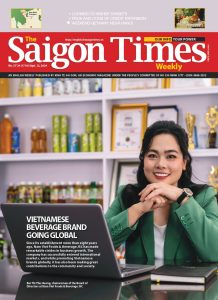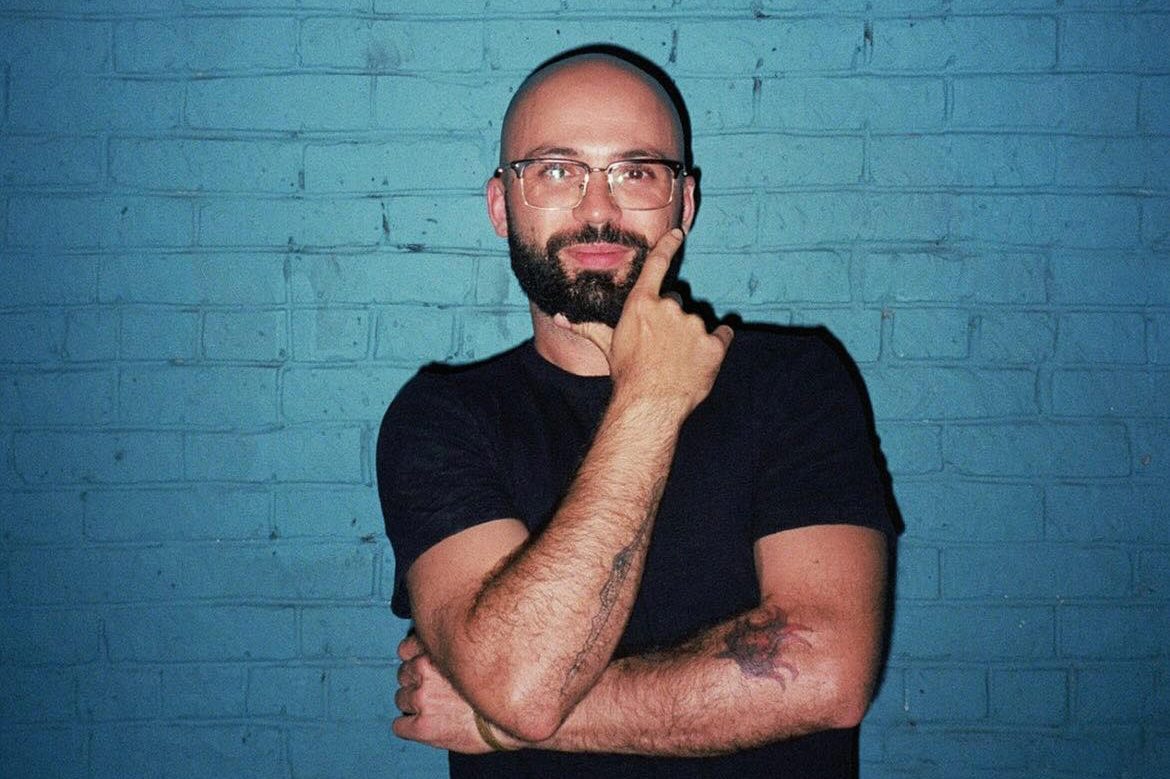Being an artist is a dream, but nurturing that passion through life’s inevitable ups and downs is a challenge. For Mariano di Guglielmo, a New Yorker who has called Vietnam home for over six years, this journey has meant exploring new opportunities to balance creativity and livelihood in the vibrant city of Ho Chi Minh. From English teacher to art teacher and sculptor, each role has supported his artistic passion and enabled him to continue his art career. In an interview with The Saigon Times, Mariano di Guglielmo unveils his journey as an insider in the art world and his experiences in Vietnam.
The Saigon Times: You have been working as a teacher in Vietnam for six years. What keeps you motivated to continue teaching here?
Mariano di Guglielmo: When I first started, I taught English at a language center and public schools. Some find it challenging because of the large classes, no air conditioning, and noise, but I enjoyed it. The students, from grades one to eight, showed great appreciation for their teachers. Seeing their enthusiasm and excitement when a foreign teacher enters the classroom was rewarding.
What do you think is the most essential quality for a teacher?
Patience and understanding are crucial. Each student has unique abilities, and it is crucial to recognize and nurture their strengths. Not every student excels at drawing, but they may have talent in 3D visualization, storytelling, or digital design. A good teacher should help students progress in their areas of strength.
What made you transition from teaching English to teaching art?
After a few years of teaching English, I started teaching art at a bilingual school and now at an international school. This allows me to share my passion for drawing, painting, and creating things with my hands. I love working with materials like pencils, paint, cardboard, and clay, and I enjoy teaching students how to create things themselves beyond screens and books.
With the rise of artificial intelligence and digital art, how do you see the future of traditional art?
It is an interesting time with AI and digital art becoming more prevalent. However, traditional art forms always have value. Creating something with your hands offers a unique experience and personal touch that digital art cannot replicate. I encourage my students to explore digital and traditional mediums, finding their balance and expressing their creativity in various ways. In today’s digital age, hands-on art remains crucial. It helps students develop focus and concentration, which are often diminished by constant screen time. Drawing, painting, and other tactile activities provide a mental health benefit by fostering a sense of calm and purpose.
How has your background in industrial design influenced your teaching methods and artistic practice?
My industrial design background has equipped me with various skills, such as drawing, marker rendering, 3D modeling, and working with different materials. These skills are invaluable in teaching young students how to express themselves creatively. I encourage my students to think outside the box, giving them guidelines but allowing them to explore their ideas.

Balancing creativity and making a living can be challenging. How do you manage this balance in Vietnam?
Creativity is not always the most lucrative path, whether in Vietnam or the U.S. Creative individuals need multiple income streams, such as teaching or side projects. I try different things and expand my network to find as many opportunities as possible. Besides teaching, I create artwork using recycled materials and making animal sculptures for decoration. This project has been ongoing for a year, and I use these sculptures to decorate homes, bars, and other venues, adding life and a magical feeling to the spaces.
Please share more about what you have been working on?
I create animal sculptures from recycled materials, which I have been working on for the past year. These sculptures not only serve as a form of artistic expression but also as decorations for my home and local bars, adding a fun and magical element to these spaces. My inspiration comes from a mix of sources. In New York, I was fascinated by the ornate sculptures on buildings, such as gargoyles. Here in Vietnam, I draw from the mythical creatures found in pagodas and temples. I also incorporate elements from Mexican folk art, known for its vibrant patterns. Combining these influences allows me to create unique and colorful sculptures. Moreover, I created an illustrated series about a street cat in Saigon, inspired by the people I saw while walking around or drinking coffee at cafes. I transformed interesting-looking people into cat characters and built stories around them. This project allowed me to blend Vietnamese life with imagination and fantasy, adding a magical touch to everyday scenes.

What difficulties have you encountered while living in Vietnam?
The first difficulty is learning the language. It is challenging to get your ideas across, especially with the different tones and vowel sounds. However, people are very accommodating when you don’t understand or speak the language well, so it is not as difficult as I initially thought. Luckily, people in Vietnam are much more outgoing and engaging compared to New York. They will casually approach you on the street, ask where you are from, and invite you into their homes or to eat with them. It is very friendly and welcoming.
What is something that made you think twice about staying in Vietnam as a foreigner?
For me, it is easy to adapt, but the heat can be a challenge for some foreigners, especially those from colder countries. They find it hard to handle the hot weather and do things outside. I enjoy outdoor activities, so I got used to it quickly. Another challenge could be the food. Some people don’t like spicy food, fish sauce, or pork. Luckily, I am adaptable and don’t have these issues.
Talking about food. Is it one of the reasons you decided to stay? Is there any specific food you want to talk about?
Absolutely. Growing up, I did not know much about Vietnamese food, having only tried pho and banh mi a few times in New York. Here, I have discovered so many different and delicious dishes, especially seafood, which I enjoy. Initially, I was skeptical about eating sea snails on the hot streets of the city. But my friends encouraged me to try, and since I am an adventurous eater, I gave it a shot and ended up really liking it.
 If you could bring one thing or one way of living from New York to Saigon, what would it be?
If you could bring one thing or one way of living from New York to Saigon, what would it be?
There are two things I would bring from New York. First, a few days or a week of cold weather each year. Just a bit, not an entire winter. The second thing would be the subway system. Getting around the city without driving or taking a taxi is great. I know Saigon’s subway is coming soon, and it will be nice to travel around the city easily, underground, away from the sun and heat.
What advice would you give to other artists looking to move to Vietnam?
For artists considering a move to Vietnam, I would say come with an open mind and heart. Be friendly, adaptable, and willing to learn from the local culture. Opportunities can arise unexpectedly, so stay open to new experiences and connections.
What are your plans as you continue your journey in Vietnam?
I plan to keep teaching and creating art, building a network with local and foreign artists. I aim to establish a community space where we can collaborate on creative projects, connect, and share our work with a broader audience.
Reported by The Ky









